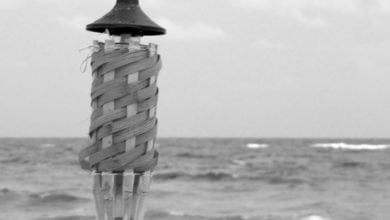
On August 3, 2011, a mysterious orange goo washed ashore in the quiet village of Kivalina, Alaska. It was a bright, moldy-looking substance, which first covered the rocks at the harbor. But the next day, after a rain storm, residents curiously found the goo inside rain buckets and even on at least one rooftop.
One resident in particular, who placed her hand into one of the goo-filled buckets, claimed she couldn’t smell anything odd, though the substance did appear to be solid.
A day or so later, most of the orange goo had washed away, while some remnants had turned into something resembling a clumpy, dry powder.
So where had it come from? What was this mysterious orange goo?
Samples were sent to labs, experts were called to the scene. Initial investigations revealed that the substance was not man-made, perhaps an algae (I hate algae) or some other organic material.
But no. Perhaps there was more to this story. Could the orange goo found in Alaska have been…extraterrestrial? Let’s find out!
Orange Goo From Space?

When Comet Elenin began to disintegrate into small chunks of ice and dust around August 2011, some were quick to point out its correlation with Alaska’s mysterious goo problem.
Comet Elenin, astronomically known as C/2010 X1, was discovered by Russian astronomer Leonid Elenin on December 10, 2010, and was cruising through our solar system in late 2011.
The comet wasn’t just blamed for the orange goo, though. Some people thought Elenin would cause all sorts of looming disasters, like earthquakes and weird gravitational distorations. It was even dubbed the “Doomsday Comet” by certain media outlets. Or maybe it was the “Harbinger Of Doom.”
To quote one random Youtube comment I read a few minutes ago, “If this type of event keeps on happening, especially around the globe, we’re dead.”
NASA had a slightly different point of view regarding Elenin. In the wake of Elenin’s anticlimactic break up, NASA’s Don Yeomans said, “I cannot begin to guess why this little comet became such a big Internet sensation. The scientific reality is this modest-sized icy dirtball’s influence upon our planet is so incredibly minuscule that my subcompact automobile exerts a greater gravitational influence on Earth than the comet ever would.”
Well, okay then. Someone pass Elenin a box of tissues, huh?
Back to Earth!

So, if the orange goo wasn’t from Comet Elenin, where did it come from? What was it? And why would anyone stick their hands in a bucket full of the stuff?
Well, not even a week later, the National Oceanic and Atmospheric Administration (that’s NOAA of “Mermaids Aren’t Real and We Can’t Nuke Tropical Cyclones” fame) revealed their findings: the goo was actually tiny little eggs filled with fatty oil.
Problem was, they didn’t know what species the eggs belonged to, where the eggs had come from, or whether or not they were toxic. That last bit troubled the people of Kivalina quite a bit, as you can imagine, because hey: rain buckets. They drink that stuff.
Problem mostly solved, though, right? Wrong. Fast forward a few weeks, and suddenly NOAA began to sing a different tune: the orange goo wasn’t eggs, it was fungus. More specifically, rust fungus, which infects only plants and causes them to take on a rusty, orange appearance. But they weren’t 100% sure. They didn’t know which type of rust fungus, and if the orange goo was the result of rust fungus spores, the amount found in Kivalina was unprecedented.
In February 2012, however, NOAA finally announced that they were able to identify the fungus as Chrysomyxa ledicola.
“Six months later the substance was identified by forest health professionals at the USDA Forest Service and the Canadian Forest Service to be spores of the rust fungus Chrysomyxa ledicola. This fungus is a plant pathogen that infects the foliage of spruce (Picea spp.) and Labrador tea (Ledum spp.).”
Whew. That puts an end to that, I guess.
Anyway, my main point with all of this goo business is, well, this: if NOAA were wrong about the eggs, maybe they were wrong about the mermaids. I’m just saying.






